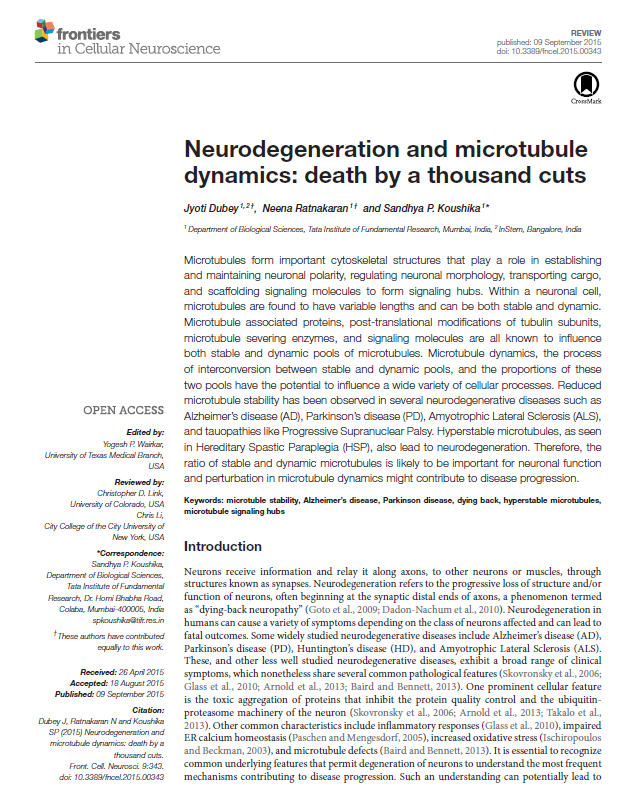Science News
Neurodegeneration and microtubule dynamics: death by a thousand cuts
Mar 12, 2021 | News

Microtubules form important cytoskeletal structures that play a role in establishing and maintaining neuronal polarity, regulating neuronal morphology, transporting cargo, and scaffold ingsignaling molecules to form signal inghubs. With in a neuronal cell, microtubules are foundt o have variable lengths and can be both stable and dynamic. Microtubule associated proteins, post-translational modifications of tubulin subunits, microtubules evering enzymes, and signaling molecules are all known to influence both stable and dynamic pools of microtubules. Microtubule dynamics, the process of interconversion between stable and dynamic pools, and the proportions of these two pools have the potential to influence a wide variety of cellular processes. Reduced microtubule stability has been observed in several neurodegenerative diseases such as Alzheimer’s disease(AD), Parkinson’s disease(PD), Amyotrophic Lateral Sclerosis(ALS), and tau opathies like Progressive Supranuclear Palsy. Hyperstable microtubules, as seen in Hereditary Spastic Paraplegia(HSP), also lead to neurodegeneration. Therefore, the ratio of stable and dynamic microtubules is likely to be important for neuronal function and perturbation in microtubule dynamics might contribute to disease progression.
https://www.tubintrain.eu/wp-content/uploads/2021/03/Anne-Catherine.fncel-09-00343-1.pdf
Written by tubinAD
